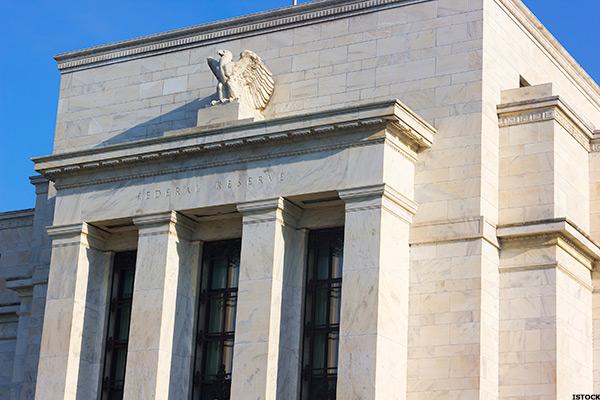Why the Federal Reserve is as much to blame for Turkey’s economic crisis as Donald Trump
It is necessary to point to the Fed’s actions to understand tremors in world markets, but central bankers should never have been held solely responsible for the restoration of macroeconomic stability


Your support helps us to tell the story
From reproductive rights to climate change to Big Tech, The Independent is on the ground when the story is developing. Whether it's investigating the financials of Elon Musk's pro-Trump PAC or producing our latest documentary, 'The A Word', which shines a light on the American women fighting for reproductive rights, we know how important it is to parse out the facts from the messaging.
At such a critical moment in US history, we need reporters on the ground. Your donation allows us to keep sending journalists to speak to both sides of the story.
The Independent is trusted by Americans across the entire political spectrum. And unlike many other quality news outlets, we choose not to lock Americans out of our reporting and analysis with paywalls. We believe quality journalism should be available to everyone, paid for by those who can afford it.
Your support makes all the difference.Beware the dog days of August, wherein last week, President Trump roiled currency and European equity markets with a shock announcement that the US would double tariffs on Turkish steel and aluminium. It was a move that caused Turkey’s already weakened currency to fall off a cliff on Friday, and threatens wider turmoil.
On one of 2007’s August dog days, the Swiss bank UBS announced that assets on its balance sheet could not be valued fairly, and therefore investors would not be allowed to withdraw funds. This shock caused interbank lending across the world to freeze, and central banks to intervene with massive injections of liquidity.
It began the slow-motion rollout of the global financial crisis of 2007-9, which peaked with the bankruptcy of Lehman’s in September 2008. A crisis that so far, is without end.
While President Trump’s latest foreign policy moves are typically unpredictable and aggressive, they are not alone responsible for global financial turbulence. Blame can also be allocated to the more sedate and discreet, but equally disruptive, policy moves of the US’s Federal Reserve.
For six years after November 2008, the Fed, along with other central banks, took a dominant role in stabilising the global financial crisis. Orthodox economists had advocated a path of “monetary radicalism and fiscal conservatism”. Politicians obliged. And so, central bankers began to purchase and place on their balance sheets treasuries and mortgage backed securities owned by banks teetering on the edge of bankruptcy. Central banks became, in the words of Mark Carney “the only game in town”. The Fed lowered its policy interest rate from 5.25 per cent in September 2007 to 0-0.25 per cent in December 2008, and quadrupled its balance sheet from less than $900bn (£700bn) in 2008 to roughly $4.5 trillion by 2014. At this point, “tapering” of its quantitative easing programme began.
Today’s financial turbulence can be traced back to Fed decisions in June 2017 to begin the “normalisation” of its balance sheet, gradually shedding its bond holdings in monthly stages. This monthly “runoff” of $10bn of maturing assets on to capital markets causes bond prices to fall, and yields to rise. On some estimates the Fed’s bond portfolio is expected to shrink by $315bn in 2018 and $437bn in 2019.
This process of “normalisation” is no simple and stable matter. In the words of market analyst Kristina Hooper, it’s like “defusing a bomb”.
To add to the strains caused by the “runoff” of assets, in June 2018, the Fed raised rates for the seventh time in three years and Libor followed suit. These rising rates of interest have led to the strengthening of the dollar and capital flight from emerging markets. But above all, interest rate rises pose a threat to the heavily indebted global economy. In 2000, the stock of global private and public debt amounted to $142 trillion – 260 per cent of global GDP or income. Today, 10 years after, the credit bubble at the heart of the GFC has nearly doubled to $247 trillion, or 318 per cent of global GDP.
Much of that debt is a result of the Federal Reserve’s largesse. Thanks to capital mobility, quantitative easing enabled companies, like many based in Turkey, to borrow in dollars on the international capital markets at low rates of interest. Now, as Turkey’s currency and those of other emerging markets fall, the cost of servicing debt denominated in dollars rises dramatically, threatening default.
But while it is necessary to point to the Fed’s actions to understand tremors in world markets, and to warn of the threat of another financial crisis, the fact is that central bankers should never have alone been held responsible for the restoration of macroeconomic stability. That was a task to be shared between the wielders of both fiscal and monetary policy. While the US’s fiscal stimulus was greater than the eurozone’s, it nevertheless embarked on austerity after 2011. The eurozone had already determined to impose austerity in 2010. Governments and treasuries effectively sat on their hands as the global financial crisis rolled on. As a result, recovery from the crisis has been elusive.
It is the inadequate and lopsided nature of the orthodox economic response to the global financial crisis that has prolonged the global financial crisis for 10 years, and that threatens another global financial eruption. Above all, it is the orthodox economic response that has prevented discussion, debate and action that would have resulted in the re-regulation and restructuring of the global financial system.
After the 1929 financial crisis, Keynes in 1931 and Roosevelt in 1933 got a grip, and as Erich Rauchway explains in his book The Money Makers, jointly began the process of ending the gold standard, and radically restructuring the global financial system to restore not just macroeconomic stability but, after 1945, a “golden age” in economics. Today, we are once again threatened by global financial turmoil.
This may be the time to ditch economic orthodoxy, and revive the radical and revolutionary monetary theory and policies of John Maynard Keynes. Or do we have to endure another global crisis before economists come to their senses?
Ann Pettifor is a council member at the Progressive Economy Forum and the director of Policy Research In Macroeconomics (PRIME)
Join our commenting forum
Join thought-provoking conversations, follow other Independent readers and see their replies
Comments